It is unlikely that users visit your website and end up making a purchase. That would be great, but that doesn’t happen. As first-time visitors, users might be skeptical about your product or services. You need to get them familiar with your brand, build trust and highlight how your product/services can fulfill their needs and desires.
To develop trust among users, you need micro-conversions. Think of them as stepping stones that will nurture users and help them move from one stage to another in their journey. With each step, you strengthen trust and build credibility, and over time that compounds and gives you the expected results.
But, what kind of micro-conversions will you need and how will you track them? Let’s dig in to find out.
Table of contents
What are micro conversions?
Micro conversions are small steps that users take throughout their buyer’s journey that lead them to the final conversion.
For instance, if you are hosting an event, then your goal will be to get the maximum sign-ups - this is your macro goal. Now, each step users take until they sign up will be a micro conversion. It can include opening and clicking on links in the email or engaging in social media posts related to that webinar.
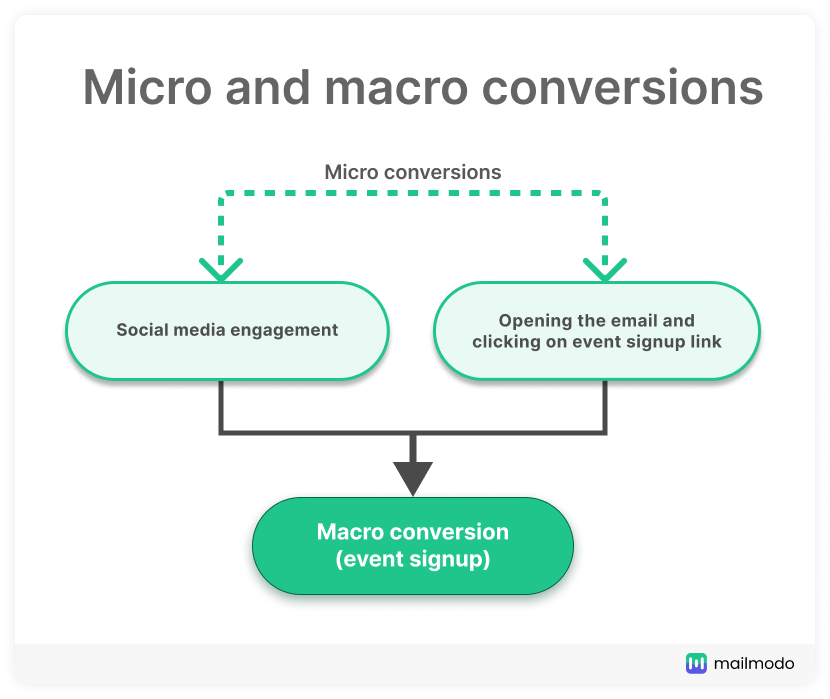
Difference between micro and macro conversion
| Micro conversions | Macro conversions |
|---|---|
| All the little steps users take in their buyer’s journey before buying. For example, signing up for your weekly newsletter, clicking on links on your site, downloading an ebook, etc. |
A macro conversion is the final or primary conversion on your website. The aim is to either make money or generate highly qualified sales leads. For example, buying a paid plan, form submission, webinar signup, etc. |
Examples of micro conversions
Here are some actions (micro-conversions) users take on your site across various stages of their journey:
Signing up for a newsletter
Communicating with chatbots
Revisiting a product page a certain number of times
Download eBooks, reports, whitepapers, or case studies
Clicking and viewing webinar recordings
Following your brand on social media
Sharing your blog posts or commenting on them
Adding items to the shopping cart
Clicking on your paid ads
Related guide: A Foolproof Guide to Marketing Collateral In 2022
Why does micro conversion matter?
Tracking micro conversion can offer valuable insights into your target audience and open up opportunities for you to optimize your macro conversions:

• Identify friction points
To nudge users towards the macro conversion, you need to map out the customer's journey and identify friction points where you are losing your customers. You can identify such drop-off points by tracking micro-conversions.
For instance, most users drop off while filling out the lead generation form. There can be many reasons behind this drop-off - the form takes too long to fill, or users might not understand the question.
By tracking these actions, you can work on these issues and resolve them to increase form submissions.
Related guide: A Beginner's Guide to Lead Generation For Generating High-Quality Leads
• Identify and retarget potential customers
A user discovers one of your blog posts through a keyword search in Google and appreciates that post enough to sign up for your monthly newsletter (a micro conversion). They could also pursue you on social media to keep up with your daily posts (another micro conversion).
This user hasn't bought a product or service, but they are curious about your brand and the content you disseminate.
Tim Clarke, Director of Sales @SEOBlog
So, tracking micro conversions can help you identify small touchpoints users go through in their journey. Besides, you can also retarget users if they show high intent to buy.
For instance, if users viewed pricing or case study page that’s a micro conversion. You have the data, and now you can leverage it to show relevant ads and send product recommendation emails to entice the user to take further action.
• Segment your audience
Tracking micro conversions through analytics tools helps you understand visitors' interaction, engagement, and behavior. You can understand the stage they are at in their journey and use this data to create segments.
For instance, if users interacted with a case studies page, they might be considering your brand. So, you can send them a personalized email sharing valuable content to build credibility and move them to the next stage.
Related guide: Step-By-Step Guide to Implement Audience Segmentation in 2022
• Identify conversion opportunities
By tracking users' little interactions you can understand your site's page performance. You can use analytics to understand which pages are most popular among visitors - pages getting higher traffic, sessions, and clicks.
For instance, if your blog post page is driving the most traffic, you might want to add a newsletter signup link. You can generate leads that you can nurture using email marketing.
Related guide: 15 conversion rate optimization strategies and best practices
How to identify which micro conversion to track?
Once you have identified the macro conversion, then you need to identify steps or actions users might take that will lead them to the final goal. The steps users take in the final conversion direction will help you create a conversion funnel - moving users from one stage to the next while building trust and credibility.
Let’s see this in practice:
Macro conversion: Get X leads through a paid ad campaign.
The ad campaign directs users to your product features page. The page has videos and other visual elements, along with a lead generation form and you have put up tracking scripts to track the interactions.
Micro conversions 1: Users clicking on the ad.
Micro conversion 2: Clicking on the video, scrolling on the website to check out the page.
Micro conversion 3: Clicking on the lead generation form.
Related guide: How to Attract Leads Using Top of the Funnel Marketing
How to track micro conversions?
Even though you develop micro-conversion strategies and have everything planned out perfectly, there is no guarantee it will lead to sales.
That is why you need to track them.
To gather micro conversion data, you need to set up tracking scripts. These are pieces of code embedded on your site for tracking user interaction.
They will get triggered as soon as users take action configured by you.
The data will be collected in your marketing analytics tool such as Google Analytics, Amplitude, Hubspot, etc.
If you want to know more, you should read our marketing analytics guide. We cover different analytics tools you can use to start tracking.
If you are using Hubspot for tracking, then read how to track micro conversion in Hubspot.
How to optimize your website for micro conversions
Once you identify which micro conversions to track, you need to develop strategies for optimizing your marketing efforts. Here we will discuss 6 strategies that you should use for conversion optimization:
1. Use progress bars in forms
A form with no indication of progress will leave customers with questions like - How many steps are there? How long will it take to complete? Will my information be saved in case I can't complete the form?
These questions might confuse users, thus discouraging them from filling out the form.
Studies show that 75% of people prefer progress bars, which are also known to improve form satisfaction and completion.
There are different types of progress bars you can choose from, like steps bars, percentage bars, category bars, etc.
Steps bar:

Percentage bar:
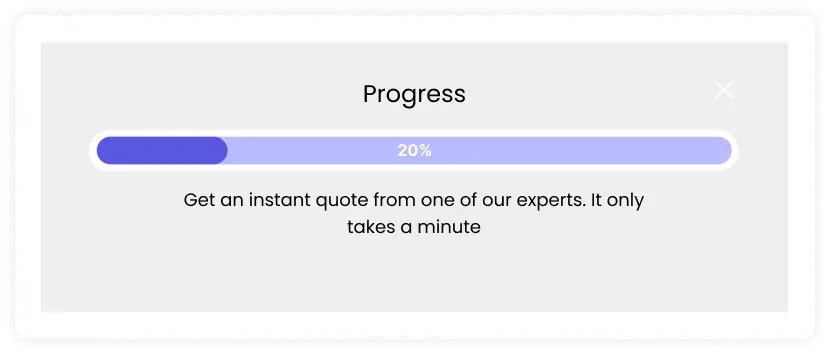
Category bars:

2. Use the save and preview button in forms
Besides, you should give a save and preview button - to save their progress and make changes to the previous section if needed.
A save button is useful as it gives users the flexibility to come back later and complete the form if they aren’t willing to fill out the form in one go. Preview allows users to take a final glance at the form and check for corrections to be made if any.
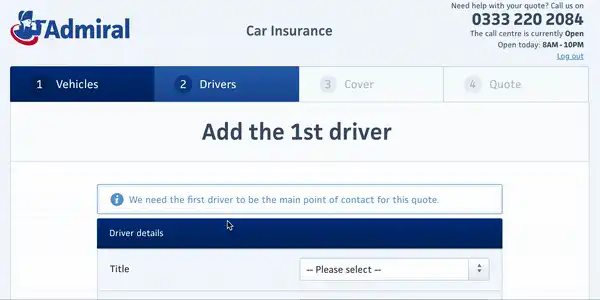
Source: Zuko
3. Add live chatbots on landing pages
Your site is live 24*7, and users might be visiting them anytime. But, your team might not be available all the time to answer their queries, and if users don’t get an answer to their queries, they will bounce.
But, luckily live chat options, or chatbots are here to help you.
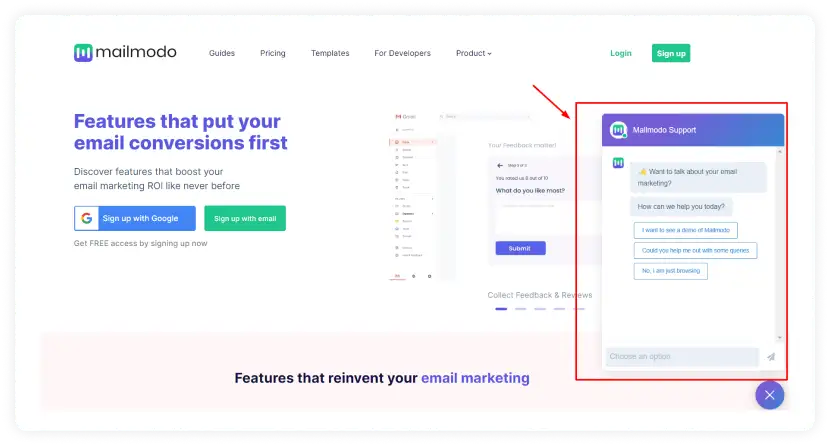
63% of users said they are more likely to return to a live chat website. It happened because chatbots aid users in their buying decisions and resolve doubts quickly.
So, to optimize your micro-conversion, set up a live chat option using tools like Zoho or Tidio.
4. Add referral and share links in your newsletter
There is no better way to get more leads and conversions than referrals and word of mouth marketing. These tactics work without any additional cost and give your brand exposure and visibility among potential users.
So, to get more micro-conversion, add a referral link in the newsletter and promise exciting rewards when someone from the user's reference signs up for your newsletter just like Aleyda Solio does in her SEOFOMO newsletter.
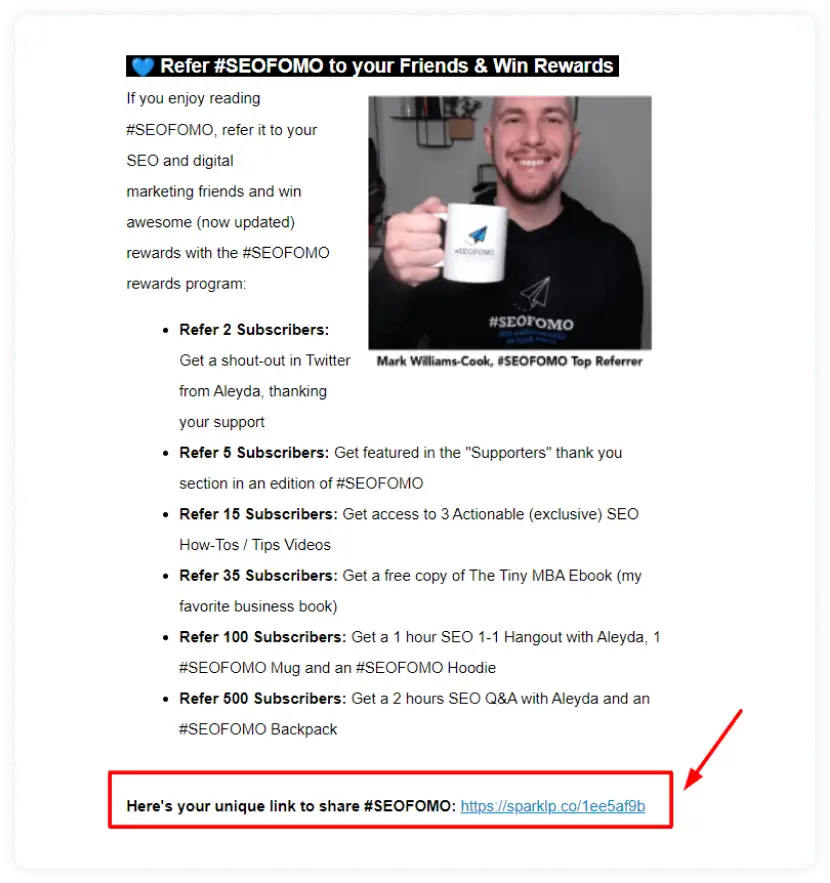
Other than referral links, always add a share button in your emails so that users can share it if they like the email.
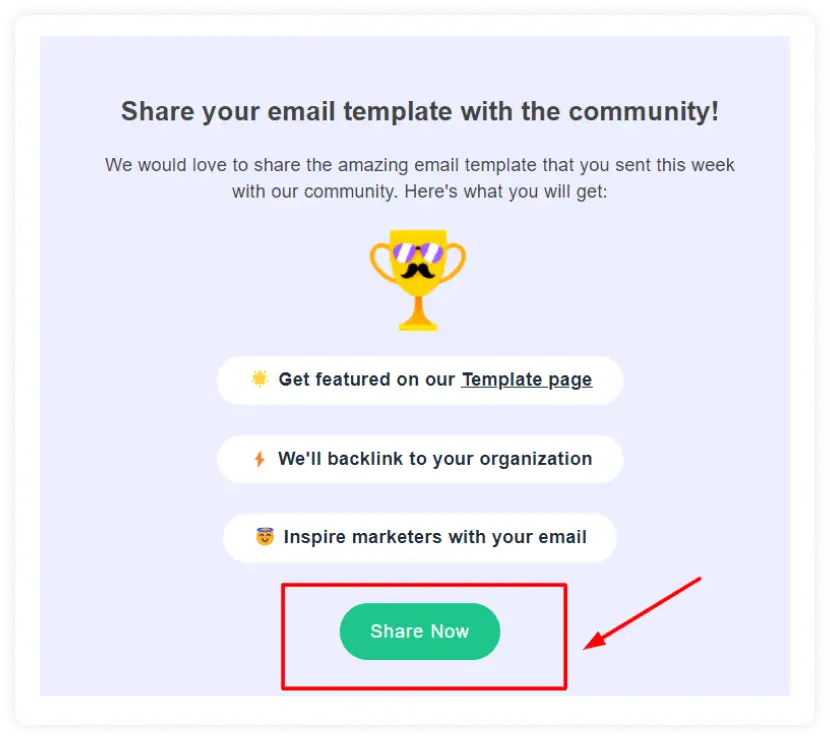
The referral and share links will also offer your micro-conversion data indicating which kind of email resonates most with the users and then use this data for further segmentation.
5. Retarget users with abandoned cart emails
Consider that users check out your products and add items to their cart but don't finish the checkout. Yes, that’s already a micro-conversion, but you can still target such users with abandoned cart emails. Thes emails compel users to view the cart or remind them of products in the cart.
To nudge users to buy, you need to create a compelling and personalized email. Still, redirecting users to their cart to complete the action might make users drop off due to many steps. Send an AMP email instead. Such emails allow them to complete the transaction within their email, saving time.
AMP emails lead to 15% more cart recovery as it makes it easier for users to complete their transactions by reducing the steps and offering direct checkout. Book a demo with us to learn more about how AMP emails can get you higher conversions.
Note: To make payment, users need to redirect to the payment gateway (if they don’t opt for COD). Payments can’t be made within the email due to security reasons.
6. Include share and comment options on blog posts
Most of the users at the top of the funnel are likely to spend more time learning about your brand and get familiar with it. Your blog posts are the best way for them to do that. And by adding a comment section, they can share their feedback, raise issues, and engage. This will help increase interaction and time spent on the page.
Besides that, you should also add share buttons to allow users to share your content piece. This helps build brand authority and leads to higher micro conversions and lead generation.
![]()
Way forward
Never underestimate the power of small steps leading to monumental views.
You can develop a holistic conversion analysis to optimize your KPIs by tracking micro conversions.
But, your work doesn’t stop once you get users to convert. As important as it is to convert users, making them your loyal customers is even more important. You want to retain them, so they buy repeatedly and become your returning customers. To know-how, you can read our 5 hacks to boost your customer retention rate using email marketing.
What you should do next
Hey there, thanks for reading till the end. Here are 3 ways we can help you grow your business:
- Talk to an email expert. Need someone to take your email marketing to the next level? Mailmodo’s experts are here for you. Schedule a 30-minute email consultation. Don’t worry, it’s on the house. Book a meet here.
- Send emails that bring higher conversions. Mailmodo is an ESP that helps you to create and send app-like interactive emails with forms, carts, calendars, games, and other widgets for higher conversions. Get started for free.
- Get smarter with our email resources. Explore all our knowledge base here and learn about email marketing, marketing strategies, best practices, growth hacks, case studies, templates, and more. Access guides here.


